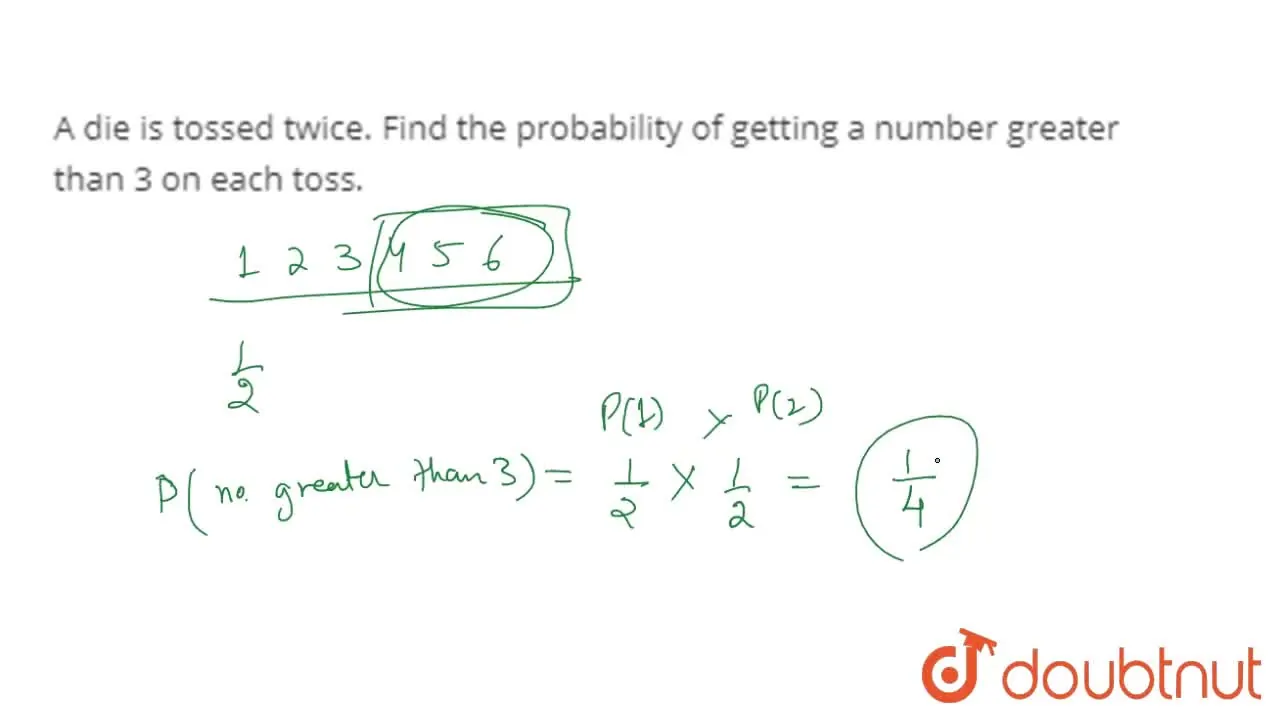A die is tossed twice. Find the probability of getting a number greater than 3 on each toss.
We are throwing two dice so,
Sample space S={(1,1),(1,2),(1,3),(1,4),(1,5),(1,6),
(2,1),(2,2),(2,3),(2,4),(2,5),(2,6),
(3,1),(3,2),(3,3),(3,4),(3,5),(3,6),
(4,1),(4,2),(4,3),(4,4),(4,5),(4,6) ,
(5,1),(5,2),(5,3),(5,4),(5,5),(5,6),
(6,1),(6,2),(6,3),(6,4),(6,5),(6,6),
Sample space contains 36 elements,
Assume.
A= getting a number greater than 3 on first toss
A=(4,1),(4,2),(4,3),(4,4),(4,5),(4,6),
(5,1),(5,2),(5,3),(5,4),(5,5),(5,6),
(6,1),(6,2),(6,3),(6,4),(6,5),(6,6),
P(A)=1836=12
B= getting a number greater than 3 on second toss
B =(1,4),(1,5),(1,6),(2,4),(2,5),(2,6),(3,4),(3,5),(3,6),(4,4),(4,5),(4,6),(5,4),(5,5),(5,6),(6,4),(6,5),(6,6)
P(B)=1836=12
P(A∩B)=P(getting a number on toss)
Given: A and B are independent events,
P(A)⋅P(B)=P(A∩B)
P(A∩B)=12× 12=14
Related Playlists
Similar Questions
A dice is tossed twice. Find the probability of getting an odd number at least once.
View Solutiondie is tossed once. What is the probability of getting a number 4?
View SolutionA die is rolled. Find the probability of getting a number greater than 6.
View SolutionA die is tossed twice. The prbability of having a number greater than 4 on each toss is
View SolutionA die is thrown once. What is the probability of getting a number greater than 4?
View SolutionA coin is tossed once. Find the probability of getting a tail.
View SolutionA die is tossed twice. The prbability of having a number greater than 4 on each toss is
View SolutionA die is tossed thrice. Find the probability of getting an even number at least once
View SolutionA die is thrown once, then the probability of getting a number greater than 3 is :
View SolutionA die is tossed thrice. Find the probability of getting an odd number at least once.
View Solution


